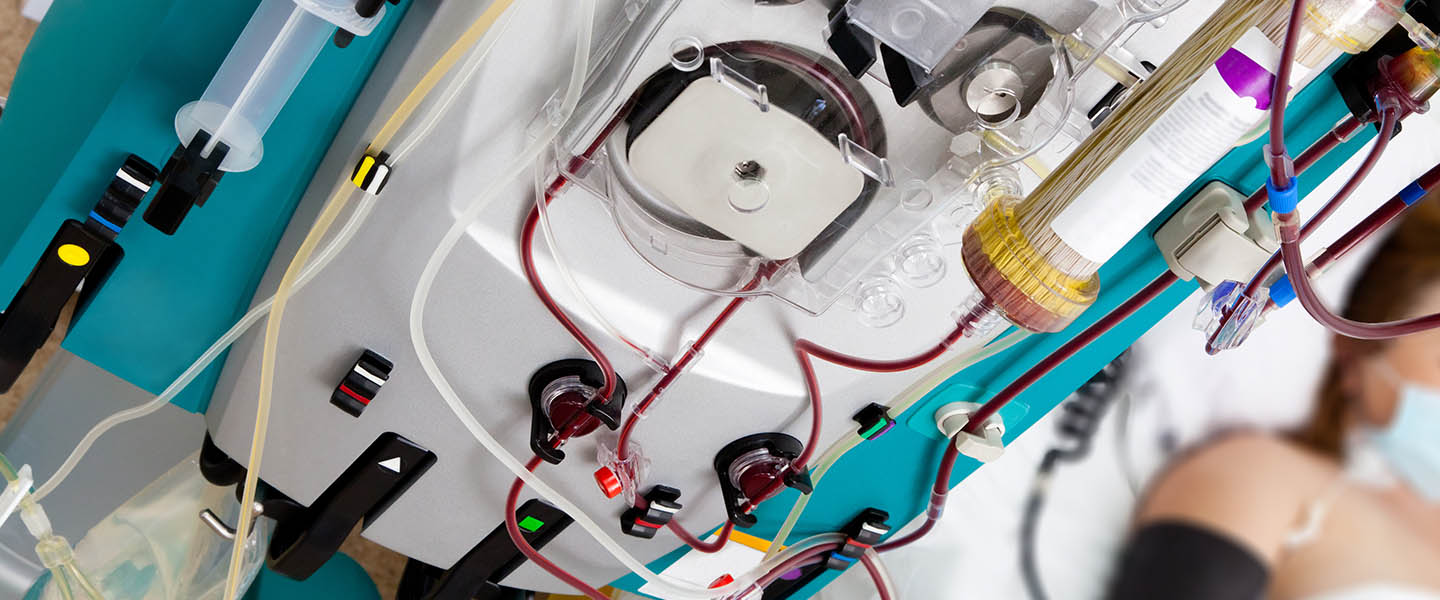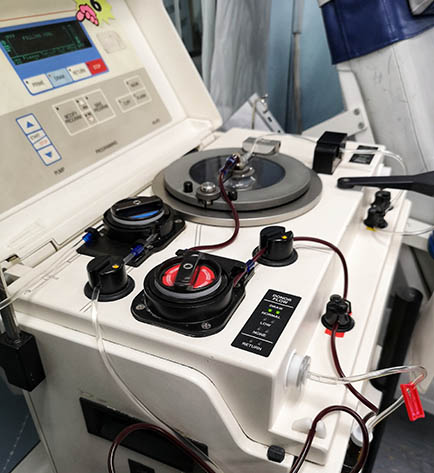At Constantiaberg Haematology, we have two apheresis machines for collecting haematological stem cells in peripheral blood to be used in bone marrow transplants. We also administer therapeutic plasma exchange therapy.


At Constantiaberg Haematology, we have two apheresis machines for collecting haematological stem cells in peripheral blood to be used in bone marrow transplants. We also administer therapeutic plasma exchange therapy.
An apheresis is a medical technology that allows blood from a donor or patient to pass through a machine. The machine then separates into its various components and a specific constituent is removed, before returning the remaining blood back in to circulation.
The components from blood that can be removed are white blood cells, red blood cells, platelets, plasma, or stem cells that are collected and used for bone marrow transplantation.
The apheresis unit performs many therapeutic procedures for patients with haematological diseases, and acts as a collection centre for stem cells for patients requiring bone marrow transplants. Treatment on the apheresis unit can last between three and six hours. For some patients the apheresis treatment is one off, for others it is a course of treatments over ten days or it may be regular treatment on a weekly or monthly basis.
Through the use of apheresis machines, we are able separate the patient’s blood into its cellular and liquid fractions and, depending on the particular disease process, cleanse an individual's blood of either harmful cellular material or soluble plasma factors. By removing plasma, the Apheresis Unit treats a large number of antibody-mediated autoimmune diseases such as myasthenia gravis, Goodpasture's syndrome (a kidney disorder), and TTP/HUS (a clotting disorder often associated with viral infection or the ingestion of bacterially contaminated food).
One of the functions of the apheresis unit is to assess blood and marrow donors having peripheral blood stem cell collections prior to the collections. This assessment will include:
A brief review by our haematologists.
A discussion about the collection procedure.
A vein check, which is important to determine whether the arm veins will be adequate to allow for stem cell collections on a cell separator machine.